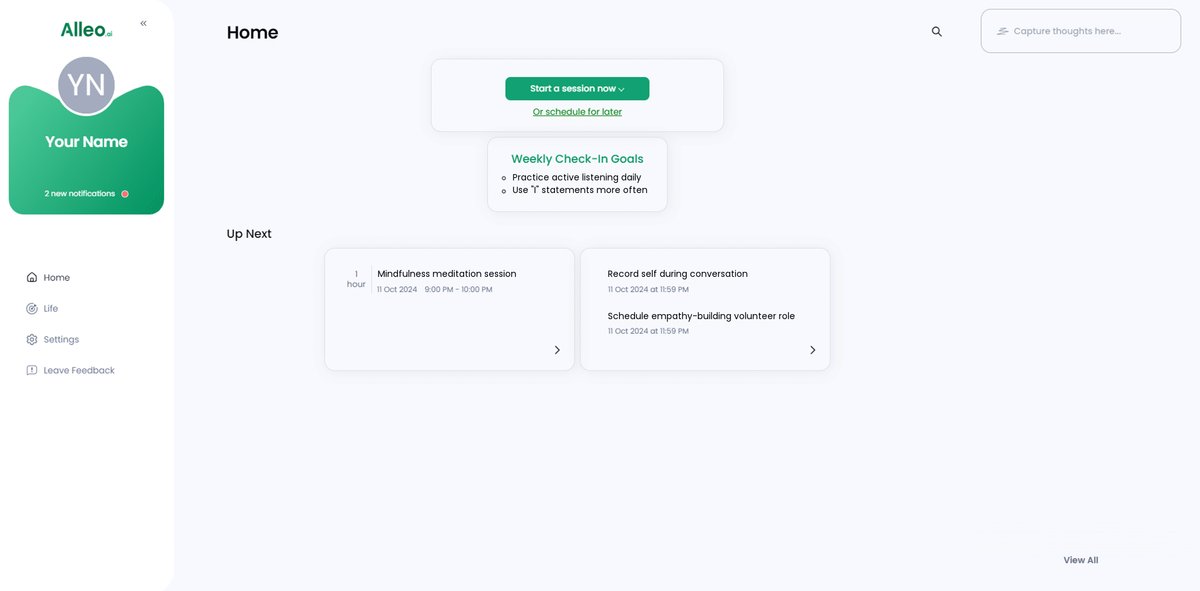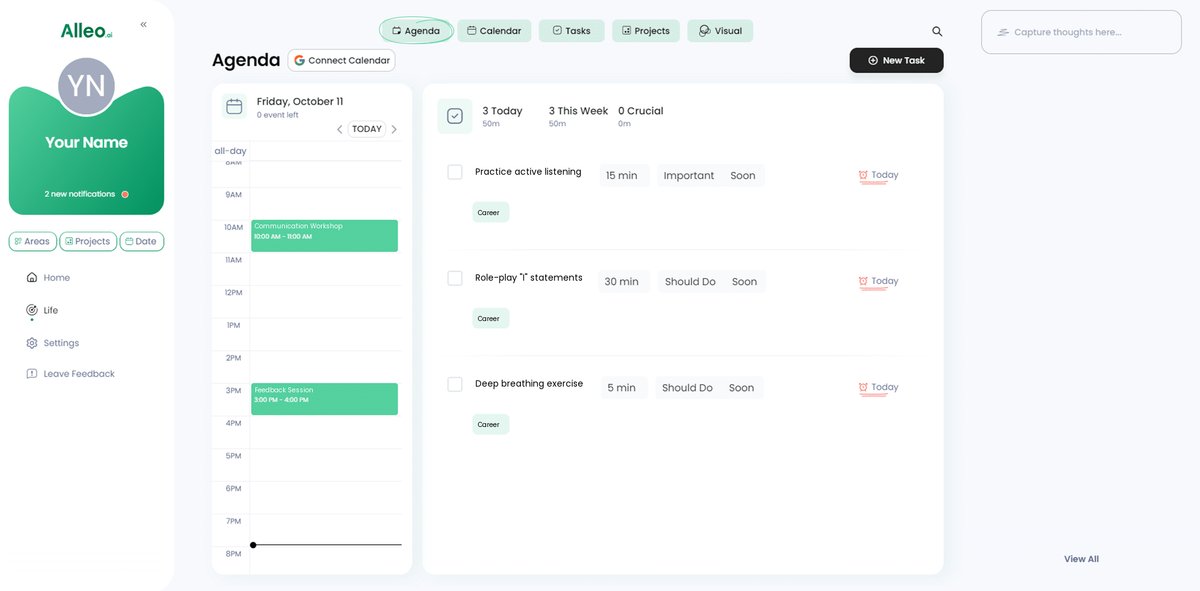7 Proven Strategies for Professionals to Tone Down Intense Communication Styles
Do you ever feel like every professional interaction turns into a high-stakes debate, leaving you constantly on edge? This is a common challenge when it comes to reducing intense workplace communication.
As a life coach, I’ve seen many professionals struggle with this issue. It’s exhausting and can take a toll on both your career and personal well-being. Improving professional interpersonal skills is crucial for a healthier work environment.
In this article, I’ll share practical strategies to help you tone down intense communication styles and develop effective workplace communication techniques. You’ll discover how to improve your interactions and manage stress more effectively, focusing on nonconfrontational communication methods and diplomatic language in business settings.
Let’s dive in and explore ways to soften assertive communication styles while enhancing emotional intelligence for managers and professionals alike.

The Cost of Constant High-Intensity Communication
Let’s explore why reducing intense workplace communication matters so much. Constantly engaging in high-intensity communication can be emotionally and physically draining, impacting effective workplace communication techniques.
Many professionals feel like they are always on edge, leading to burnout and stress, highlighting the need for improving professional interpersonal skills.
In my experience, people often find that this high-stakes mentality strains their professional relationships. It creates a tense environment where colleagues might feel attacked or misunderstood, emphasizing the importance of nonconfrontational communication methods.
This not only affects your work performance but also your personal well-being, underlining the significance of diplomatic language in business settings.
Several clients report feeling isolated because their intense communication style pushes others away. It’s a vicious cycle that can be hard to break without the right strategies for softening assertive communication styles.
Addressing this issue is crucial for maintaining a healthy work-life balance. By understanding the toll it takes, you can begin to adopt techniques to manage and improve your interactions, focusing on emotional intelligence for managers and active listening skills for professionals.

Effective Strategies for Toning Down Intense Communication Styles
Overcoming this challenge of reducing intense workplace communication requires a few key steps. Here are the main areas to focus on to make progress in improving professional interpersonal skills.
- Practice active listening and reflective responses: Focus on truly hearing others and reflecting back what they say, a crucial aspect of effective workplace communication techniques.
- Use “I” statements to express feelings and needs: Clearly communicate your feelings without blaming others, employing diplomatic language in business settings.
- Incorporate brief pauses before responding: Take a moment to think before you speak, a key strategy in softening assertive communication style.
- Soften tone and body language in interactions: Use a calm voice and open body language, essential for nonconfrontational communication methods.
- Seek feedback on communication style regularly: Ask for constructive feedback from colleagues, utilizing constructive feedback delivery strategies.
- Develop empathy through perspective-taking: Try to understand others’ viewpoints, enhancing empathy in professional interactions.
- Use stress management techniques before meetings: Practice relaxation methods to stay calm, demonstrating emotional intelligence for managers.
Let’s dive in to explore these strategies for reducing intense workplace communication!
1: Practice active listening and reflective responses
Practicing active listening and reflective responses can significantly improve your interactions by making others feel heard and respected, which is crucial for reducing intense workplace communication.
Actionable Steps:
- Attend a workshop on active listening skills for professionals.
- Implement daily practice sessions with a colleague or friend to improve professional interpersonal skills.
- Use active listening techniques in one-on-one meetings and reflect on the outcomes to enhance effective workplace communication techniques.
Explanation: These steps are essential because they help you develop better listening skills, which can reduce misunderstandings and foster stronger relationships, contributing to nonconfrontational communication methods.
By actively listening, you show respect and empathy, which are critical for effective communication and improving emotional intelligence for managers.
According to a source, assertive communication is key to expressing yourself without violating others’ rights, helping in balancing assertiveness and sensitivity at work.
Taking these steps will help you build a habit of listening actively, making your interactions more meaningful and less intense, ultimately reducing intense workplace communication.

2: Use “I” statements to express feelings and needs
Using “I” statements can help you express your feelings and needs clearly without blaming others, fostering more constructive conversations and reducing intense workplace communication.
Actionable Steps:
- Practice framing responses: Write down common scenarios and rephrase them using “I” statements to improve professional interpersonal skills.
- Role-play with a mentor: Build confidence by practicing these statements with a trusted mentor or coach, enhancing your emotional intelligence for managers.
- Apply in real conversations: Use “I” statements in daily interactions and evaluate the response, focusing on effective workplace communication techniques.
Explanation: These steps matter because they help you communicate more effectively and reduce misunderstandings, contributing to nonconfrontational communication methods.
By focusing on your own feelings and needs, you avoid placing blame, which leads to more productive conversations and helps in softening assertive communication style.
According to a source, assertive communication bridges the gap between aggressive and passive styles, promoting healthier interactions and improving diplomatic language in business settings.
You’ll find that using “I” statements can transform your communication, leading to better relationships and less stress, while enhancing your active listening skills for professionals.

3: Incorporate brief pauses before responding
Incorporating brief pauses before responding can significantly reduce intense workplace communication and ensure more thoughtful interactions, improving professional interpersonal skills.
Actionable Steps:
- Practice mindfulness or meditation: Dedicate a few minutes daily to mindfulness exercises to improve focus and patience, enhancing emotional intelligence for managers.
- Set a personal goal: Aim to count to three before responding in conversations to give yourself a moment to think, promoting effective workplace communication techniques.
- Reflect on interactions: Take time to review conversations where you successfully used pauses and note any changes in dynamics, fostering nonconfrontational communication methods.
Explanation: These steps are crucial as they help you develop a habit of pausing, which can lead to more deliberate and effective communication, balancing assertiveness and sensitivity at work.
According to Coursera, focusing on facts rather than emotional speculation during disagreements can improve interactions. By incorporating pauses, you allow yourself time to consider your response, leading to more constructive feedback delivery strategies.
Taking a moment to pause before speaking can transform your communication style, making interactions smoother and less stressful, thus reducing intense workplace communication and promoting empathy in professional interactions.

4: Soften tone and body language in interactions
Soften your tone and body language to make your interactions more approachable and less intense, which is crucial for reducing intense workplace communication.
Actionable Steps:
- Record yourself during conversations: Review your tone and body language to identify areas for improvement in effective workplace communication techniques.
- Seek feedback from trusted colleagues: Ask for honest input on your nonverbal cues and make adjustments accordingly to enhance your professional interpersonal skills.
- Practice softening in low-stakes situations: Use a calm voice and open body language in casual settings to build the habit of nonconfrontational communication methods.
Explanation: These steps matter because nonverbal communication greatly influences how others perceive you in professional interactions.
By softening your tone and body language, you can create a more inviting and less confrontational environment, effectively reducing intense workplace communication.
According to a source, matching your nonverbal signals with your verbal messages is crucial for clear communication.
Taking these steps helps ensure that your body language and tone align with your intentions, making your interactions smoother and more effective while improving your emotional intelligence as a professional.

5: Seek feedback on communication style regularly
Regularly seeking feedback on your communication style is crucial for reducing intense workplace communication and building strong professional relationships.
Actionable Steps:
- Schedule regular check-ins: Arrange monthly meetings with a manager or peer to get honest feedback on your nonconfrontational communication methods.
- Use a feedback tool: Implement an anonymous feedback app to gather input from colleagues on your diplomatic language in business settings.
- Set measurable goals: Based on feedback, create specific goals to improve professional interpersonal skills and track your progress over time.
Explanation: Regular feedback helps you understand how others perceive your communication and identify areas for improving effective workplace communication techniques.
According to Hospitality Net, balancing assertiveness and empathy is key to effective workplace communication.
By actively seeking feedback, you can make informed adjustments to soften your assertive communication style and foster better interactions.
Taking these steps ensures you continually refine your communication style, leading to more positive and effective professional relationships while reducing intense workplace communication.

6: Develop empathy through perspective-taking
Developing empathy through perspective-taking helps you understand others’ viewpoints, fostering more effective workplace communication and reducing intense workplace communication.
Actionable Steps:
- Engage in diverse reading: Read books or articles that present different perspectives to broaden your understanding and improve professional interpersonal skills.
- Volunteer for empathy-building roles: Take on roles like mentoring or customer service to practice empathy in real scenarios and enhance emotional intelligence for managers.
- Reflect on past interactions: Think about situations where empathy improved outcomes and apply those insights to future conversations, focusing on nonconfrontational communication methods.
Explanation: These steps matter because empathy enhances your ability to connect with others and reduces misunderstandings. By seeing things from another’s perspective, you foster better interactions and improve diplomatic language in business settings.
According to Neurodivergent Insights, mutual understanding is crucial for effective communication between diverse individuals.
Empathy can transform your communication style, making your interactions more respectful and less intense. Here are some key benefits of developing empathy in professional interactions:
- Enhanced understanding of others’ motivations and needs, supporting active listening skills for professionals
- Improved ability to resolve conflicts constructively, aiding in reducing intense workplace communication
- Increased trust and rapport in professional relationships, balancing assertiveness and sensitivity at work

7: Use stress management techniques before meetings
Using stress management techniques before meetings can help you stay calm and focused, ensuring more effective workplace communication and reducing intense workplace communication.
Actionable Steps:
- Incorporate deep breathing exercises: Spend a few minutes practicing deep breathing to relax and center yourself before meetings, improving professional interpersonal skills.
- Take a brisk walk: Engage in light physical activity like a short walk to reduce stress and improve your mood, enhancing emotional intelligence for managers.
- Create a calming pre-meeting routine: Develop a routine that includes listening to calming music or reviewing positive affirmations, supporting nonconfrontational communication methods.
Explanation: These steps are important because managing stress before meetings can significantly improve your communication and reduce intensity, contributing to softening assertive communication style.
According to Coursera, effective communication is foundational to healthy working relationships. By reducing stress, you can approach interactions with a clearer mind and more balanced emotions, fostering empathy in professional interactions.
Taking time to manage stress before meetings sets the stage for more productive and less intense interactions. Consider these quick stress-relief techniques to aid in reducing intense workplace communication:
- Progressive muscle relaxation
- Visualization of a peaceful scene
- Brief mindfulness meditation

Partner with Alleo to Master Effective Communication
We’ve explored the challenges of intense workplace communication and the steps to overcome them. But did you know you can work directly with Alleo to make this journey easier and faster in reducing intense workplace communication?
Setting up an account with Alleo is easy. First, create a personalized plan tailored to your communication goals, focusing on effective workplace communication techniques and improving professional interpersonal skills.
Alleo’s AI coach will guide you through mastering these strategies for reducing intense workplace communication. The coach helps you set goals, offers actionable advice on nonconfrontational communication methods, and follows up on your progress in developing emotional intelligence for managers.
Alleo will keep you accountable with reminders via text and push notifications, helping you practice active listening skills for professionals and constructive feedback delivery strategies.
Ready to get started for free and enhance your diplomatic language in business settings? Let me show you how!
Step 1: Log In or Create Your Account
To start your journey towards better communication, log in to your existing Alleo account or create a new one in just a few clicks.

Step 2: Choose “Building better habits and routines”
Click on “Building better habits and routines” to focus on developing consistent practices that will help you manage intense communication styles and reduce stress in your professional interactions.

Step 3: Select “Career” as Your Focus Area
Choose “Career” as your focus area to directly address communication challenges in your professional life, helping you develop stronger workplace relationships and reduce stress in high-stakes interactions.

Step 4: Starting a Coaching Session
Begin your journey with Alleo by scheduling an initial intake session, where you’ll discuss your communication challenges and set up a personalized plan to improve your interactions using the strategies outlined in this article.

Step 5: Viewing and Managing Goals After the Session
After your coaching session, check the Alleo app’s home page to review and manage the communication goals you discussed, helping you stay on track with your progress in toning down intense interactions.

Step 6: Adding events to your calendar or app
Use the app’s calendar and task features to schedule and track your progress in implementing communication strategies, such as setting reminders for active listening practice or planning stress management routines before important meetings.

Take Control of Your Communication Style
As we’ve explored, high-intensity communication can take a serious toll on your well-being and professional relationships. Reducing intense workplace communication is crucial for a harmonious work environment.
By implementing these effective workplace communication techniques, you can transform your interactions. You’ll find that active listening skills for professionals, using “I” statements, and managing stress can make a significant difference in improving professional interpersonal skills.
Remember, small changes lead to big results. Start practicing these nonconfrontational communication methods today.
And if you need additional support in softening your assertive communication style, Alleo is here to help. Our AI life coach can guide you through the process, making it easier to achieve your communication goals and enhance your emotional intelligence for managers.
You deserve to feel calm and confident in every interaction. Let’s get started on this journey together, focusing on diplomatic language in business settings and empathy in professional interactions.
Try Alleo for free and see the difference it can make in reducing intense workplace communication!